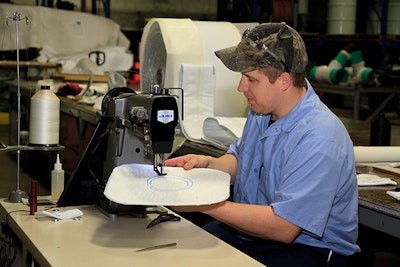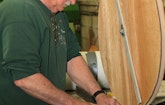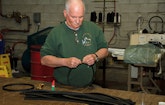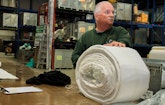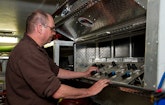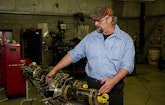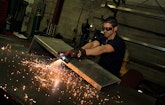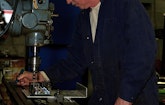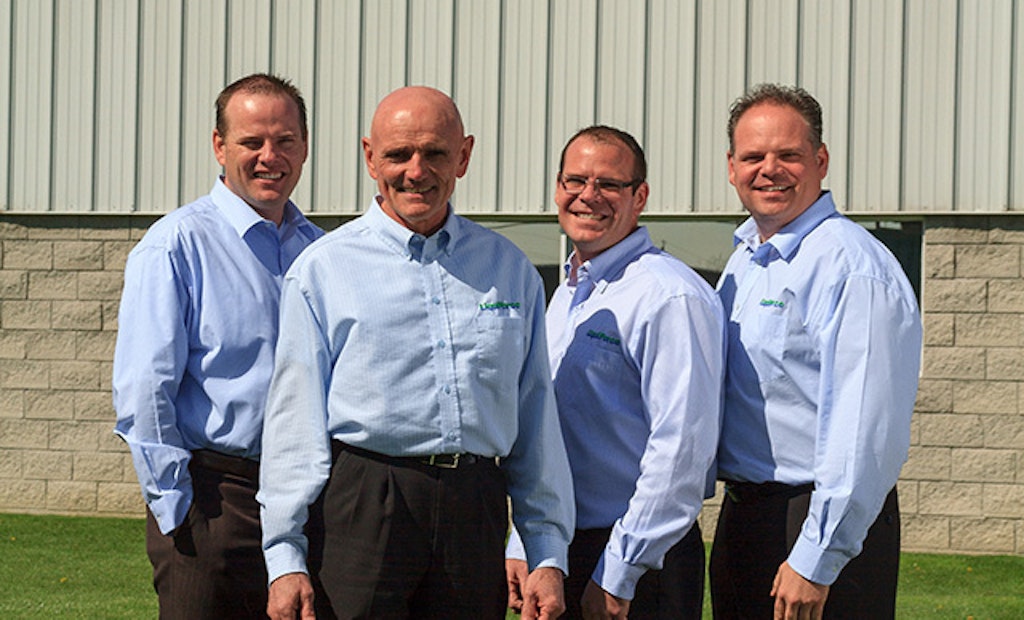When his customer base came looking for a better way of dealing with deteriorating pipelines and ways to manage the rising costs of maintenance caused by I&I, LiquiForce Services CEO Kim K. Lewis and his fledgling company rose to the challenge. Jumping into the trenchless technology arena full force has not only helped this small startup grow into one of Ontario's largest sewer service contractors, it is now helping to bring some advanced rehabilitation methods and products to market to benefit the underground infrastructure industry as a whole.
Humble beginnings
LiquiForce began its operations in 1987 in the Town of Kingsville, Ontario, with just four staff members and a few trucks operating from an old renovated gas station. The company started out as a high-pressure blasting service provider until the City of Leamington, Ontario, expressed a need for sewer flushing services and wondered if Lewis would consider getting into the business. Never one to pass up a good business opportunity, Lewis invested in a sewer cleaning unit. He didn’t know much about it personally but surrounded himself with a crew that had experience to open up this new profit center for the company.
The news of Lewis’ cleaning service and quality work spread quickly and within a year, Leamington, along with other neighboring communities, came to him again asking if he would be willing to get involved in video pipeline inspection as there was a growing need for the service. Lewis jumped deeper into trenchless technology, purchased camera equipment and brought on additional staff to meet his clients’ requirements.
A natural progression
By 1990, LiquiForce was providing its cleaning and inspection services to municipalities, industries and utility companies as well as oil and gas producers throughout the region. The natural progression was that these clients started asking Lewis and his team about rehabilitating infrastructure utilizing methods other than traditional dig and replace.
“We started looking all over North America and Europe for various potential systems. Trenchless technology wasn’t very advanced in those days; it was actually quite primitive,” says Lewis. “Insituform [Aegion] had brought their lining process to North America probably 15 years prior to that, so that was a good starting point, but everything else was in the very early stages, so there was a lot of trial and error in what we did.”
Client cities were willing to consider these new trenchless methods because they were looking to save money and resolve their issues with as little disruption to their community as possible, but getting full buy-in wasn’t always easy. To get past this, LiquiForce worked with its clients performing a lot of small pilot trials of various methods.
After selling and convincing the local engineers and town fathers that a potentially successful CIPP lining method was available, LiquiForce would perform field demonstrations. Some processes came from Europe, some from North America, and Lewis admits that only half of the projects and systems worked, some not at all and a few marginally.
“Back in those days, getting trenchless to be fully accepted like it is today was a long, slow and cumbersome process and sometimes we wondered if we’d ever get there, but persistence has paid off and we’ve finally arrived,” Lewis says.
As they celebrate their 25th anniversary in business, Lewis and his team have witnessed many changes in CIPP lining and trenchless technology. Methods, materials and processes are now proven and many options are available. Because of this, LiquiForce manufactures its own lining technologies in-house. Felt and other raw materials are purchased to create the liners,
and chemicals are sourced from various firms to create custom blends for
lining projects.
A shift in thinking
Lateral rehabilitation is a large component of LiquiForce’s business, and Lewis noticed growth in the scope of work surrounding this particular aspect of wastewater collection systems. Shifts in responsibility and the desire for a less financially painful way to deal with these aging underground assets were creating a demand for contractors like LiquiForce to come up with more cost-efficient and time-saving methods to perform trenchless repairs.
“There is more and more emphasis being put on eliminating I&I and tying projects together to remove all the sources of infiltration in the entire system and not just deal with one portion like the main or a manhole,” says Lewis.
Instead of performing lining of just the mainline, Lewis has seen a shift in municipalities of either assuming the responsibility of the repair of the lateral from the right-of-way all the way to the house or when performing the municipal lateral portion of the repair, providing an opportunity for the property owner to take care of their portion at the same time at a reduced cost.
“By approaching it this way, you’re making the whole system leak-free from the edge of the house right to the treatment plant. This approach is becoming more and more prevalent because over time it saves the community a lot of money in treatment expenses,” Lewis says.
But with this shift in thinking comes a challenge. Bigger lateral lining programs mean more linear feet to deal with on each project. The budgets need to go further but the technology still has to meet performance standards. How do you do more without sacrificing quality? Build a better system.
A new way
Approximately 10 years before this new way of viewing laterals in relationship to the collection system and I&I began, Lewis had a dream of devising a totally trenchless method for lateral lining – no cleanout, no disruption of a property, everything handled completely from the mainline. Everything he had learned or been told indicated this was an impossible dream but Lewis wasn’t about to give up, he was “thinking big.”
In 2009, Lewis approached the Canadian Federal government for financial support to build and test a system prototype. If successful, this system would not only be used in Canada by LiquiForce on its projects but also be offered commercially worldwide so that other contractors could utilize this new system and method to save their clients money.
One of the driving reasons for developing the system was to eliminate the cleanout and restoration costs from the lining project equation. A recent study presented at the 2012 No-Dig Conference cited that it cost an average of $3,400 to install a cleanout for access at the front area of a property. If that step wasn’t required, the financial savings would be significant on large-scale lateral rehabilitation projects.
But that wasn’t all Lewis dreamed of eliminating. The more streamlined the process, the fewer steps and hands involved, the more cost-effective and efficient the lining process could become.
“The lining process was a 13-step process for every lateral, from the time you went in, excavated the cleanout, performed a camera inspection, cut the line open and performed the rehabilitation and post-lining quality checks and reinstatement,” Lewis explains. “With our ‘dream system’ we were confident we could significantly cut down the steps.”
The new system took one year of research and development and Lewis indeed created a super-efficient lining system. The new totally trenchless lateral lining system requires just
four steps:
Deploy a camera unit from the mainline (manhole entrance) to inspect the main and the lateral condition.
Deploy a device that cleans and inspects the lateral, measures it and then records the data, which is then transferred to the LiquiForce plant so that a custom-fit liner can be created for the specific lateral.
Return to the site after the liner and resin are manufactured and install the liner from the main.
Perform a post-lining CCTV inspection.
These four steps are accomplished utilizing approximately a half-dozen pieces of equipment that include two “centerpieces” – a PFM truck, which prepares the lateral, cleans it, takes pictures and deploys the measurement device, and the lining rig, which houses multiple video screens so the operators can monitor the entire process to ensure a proper installation on the first try.
From the mainline, LiquiForce has been able to reline 4- to 6-inch laterals up to 150 feet in length. The system is capable of handling the multiple bends and transitions that are common to most laterals. During the measurement step, these critical transition measurements are captured and the liner is custom-manufactured to include the transitions and slack for bends so the liner fits perfectly. Wet-out is performed on site. The junction connector portion of the liner is built-in and installed at the same time as the lateral. The junction liner is structural with built-in hydrophilic seals that stop leaking and connect seamlessly to either an unlined or previously lined main. It is held in place by a special mechanical device that is incorporated into the lining system.
Seeing is believing
With Lewis’ dream becoming a reality, the City of Hamilton, Ontario, is now able to take advantage of this new technology for their lateral rehabilitation program.
“A few years ago, they hoped it could be done. They wanted us to find a way to get rid of the cleanout so that they could reduce rehabilitation costs and make it easier for the homeowners,” says Lewis. “Now they have seen firsthand that lining laterals can be done completely trenchlessly. With 250,000 active sewer laterals, this equates to monumental savings.”
For Hamilton, LiquiForce will not only eliminate the cost of surveying and excavating each lateral, but also the need to gain permission to access private property. This all adds up to a win-win situation for homeowners and asset owners alike.
“Now that we know it works, we are looking for other contractors in other parts of the world who are interested in utilizing our technology and helping us to continually make it better,” says Lewis. “We had a dream and it came true but we don’t want it to stop there. As a business owner you have to be persistent and make a decision not to quit. There’s still more all of us can do to make trenchless better, so never quit learning and dreaming and above all, make sure you think big.” C
